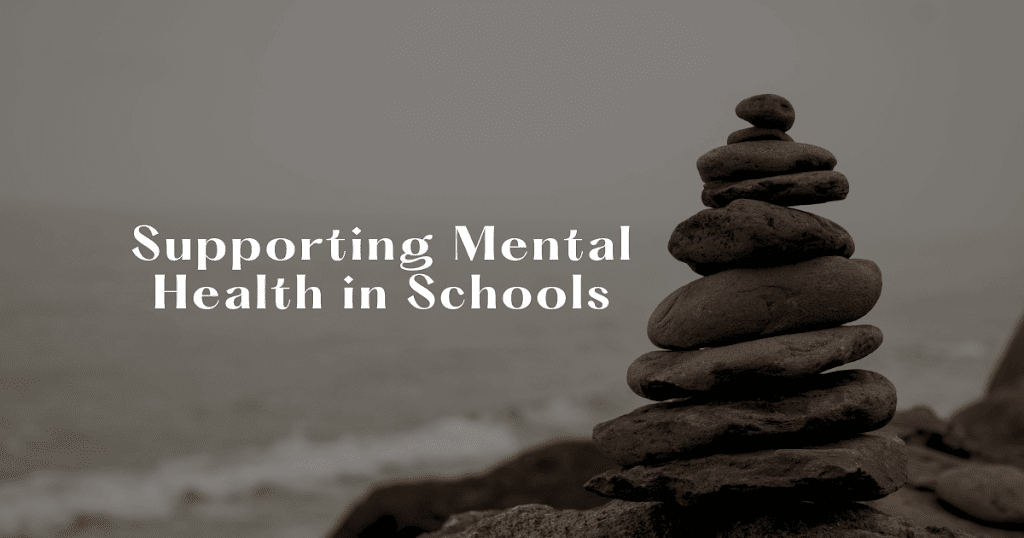Introduction
Mental Health is a crucial aspect of overall well-being, and addressing it
in every domain is essential. Schools are no exception! In today’s fast-paced
world, students often face academic pressure, bullying, peer pressure, or other
stressors that can affect their mental health. Teachers and parents must come
forward to support them with strategies that promote positive mental health
habits.
This blog post will discuss various methods for students, teachers, and
parents to ensure that schools become a safe space where children can thrive
academically and emotionally. So, let’s dive into how we can support Mental
Health in Schools!
Overview of Mental Health in Schools
Mental health in schools is becoming an increasingly pressing issue as the
demands on students and teachers continue to grow. According to research, one
in five children and adolescents will experience a mental health problem during
their school years. This means that it’s more important than ever for schools
to implement strategies that support the well-being of their students.
The challenges facing students today are numerous, including academic
pressure, social anxiety, bullying, family issues, and much more. These
pressures can have a significant impact on mental health and well-being. For
example, depression and anxiety can lead to poor academic performance, while
stress can cause physical symptoms like headaches or stomachaches.
Teachers also face challenges when it comes to supporting student’s mental
health due to increased workloads caused by overcrowded classrooms with diverse
backgrounds of learners who need differentiated instruction.
Parents play an essential role in supporting their children’s mental
well-being at home but must work closely with teachers so they know how best
they can help each child cope with any difficulties they may be experiencing.
There is still a long way to go before every school has adequate resources
available for effectively addressing this complex issue; nevertheless, we’re
making progress toward raising awareness about these concerns among
policymakers and educators alike, creating hope for future generations!
Strategies for Students
As students, it can be challenging to navigate the demands of school while
also managing our mental health. However, there are several strategies we can
implement to help support our well-being.
Firstly, prioritizing self-care is crucial. This includes getting enough
sleep each night, eating a balanced diet, and engaging in physical activity
that we enjoy. Taking breaks throughout the day to rest and recharge is also
essential.
Additionally, developing healthy coping mechanisms for stress and anxiety
can significantly benefit our mental health. This could include practicing
mindfulness or meditation techniques, journaling about our emotions, or talking
to a trusted friend or counselor about what we’re going through.
Furthermore, setting realistic goals and boundaries for ourselves can help
reduce feeling overwhelmed and under pressure. We should focus on progress
rather than perfection regarding academic performance.
Taking care of our mental health as students requires effort and
intentionality. By implementing these strategies into our daily routines, we
can foster resilience and thrive academically and personally.
Strategies for Teachers
Teachers play a critical role in the mental health of their students. Here
are some strategies teachers can use to support the mental well-being of their
students:
Firstly, teachers must create a safe and inclusive classroom environment
where all students feel valued and respected. This means promoting diversity,
equity, and inclusion in the classroom.
Secondly, teachers should be aware of warning signs that indicate a student
may be struggling with mental health issues. These include changes in behavior
or mood, decreased academic performance, and social withdrawal.
Thirdly, teachers can incorporate mindfulness practices into their lessons
to help students manage stress and anxiety. This could include simple breathing
exercises or guided meditations.
Fourthly, educators should also provide resources (such as pamphlets or
websites) about mental health awareness for themselves and their students,
enabling them to understand better how to cope with any potential challenges.
Finally, yet importantly, Teachers must communicate regularly with
parents/guardians regarding their child’s education progress and take time out
from this communication loop to discuss any concerns related to the student’s
emotional well-being.
Strategies for Parents
Parents play a crucial role in supporting the mental health of their
children. One of the most essential strategies for parents is to create and
maintain open communication with their children. This means listening actively,
without judgment or interruption, when their child shares their thoughts and
feelings.
Another strategy is to model healthy coping skills themselves. When parents
prioritize self-care and seek support when needed, they demonstrate to their
children that it’s okay to ask for help. Additionally, encouraging physical
activity and healthy eating habits can positively impact mental health.
It’s also essential for parents to be aware of warning signs that may
indicate a need for professional support. These could include changes in
sleeping patterns, appetite, increased irritability, or social withdrawal.
Parents should work collaboratively with school staff if they have concerns
about their child’s mental health. By keeping an open dialogue with teachers
and administrators about any challenges or changes at home that may affect
their child’s behavior or mood at school, parents can ensure everyone is
working together towards the best outcomes for their student’s well-being.
Conclusion
Supporting mental health in schools is crucial for students’ overall
well-being and success. It requires a collaborative effort among teachers,
parents, and students to create a supportive environment that promotes positive
mental health.
Implementing strategies such as regular check-ins with students, providing
counseling services, promoting self-care practices, creating safe spaces for
dialogue about mental health issues, and reducing the stigma associated with
seeking help can significantly impact student’s lives.
It’s essential to prioritize mental health in schools to ensure every
student has an equal opportunity to succeed academically and personally. Let us
all work together towards addressing the issue of mental health in schools so
that our children can receive the support they need to thrive!
